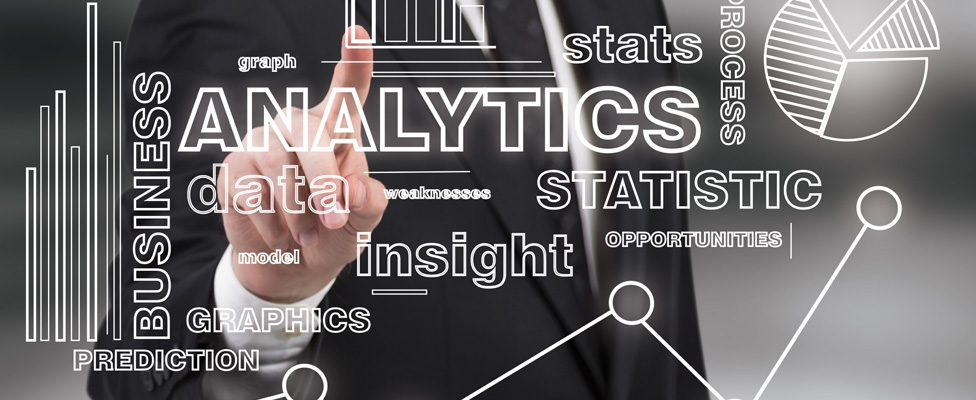
How to Transform a Business with Embedded Analytics
Creating data-driven decisions is not simply a case of adopting the right tools -- it's about offering the right data within the context of the applications people use every day.
- By Josh Martin
- September 28, 2016
It's the new status quo for business: if it doesn't get measured, you will not get budget for it. In other words, everyone -- from sales and marketing to product development and finance -- is expected to leverage analytics to make data-driven decisions.
Just as organizations have increased their expectations, business users have also increased theirs. It's not enough to just provide easy access to data analytics.
Business users, when acting as consumers, pick up their smartphones whenever a question pops into their heads. They choose the solution that provides the most convenient and visually appealing experience.
The same principle can increase adoption of business apps. Businesses must deliver a tailored analytics experience in the context of their users' workflow to ensure they actually use the information to make data-driven decisions -- survey results confirm that the majority of business users don't use broadly distributed data discovery tools.
Benefits of Embedded Analytics
Enter embedded analytics, where applications provide data-driven insights "in the moment" of every decision and every action. Embedding analytics into the applications workers use every day provides users a much more seamless experience because they don't have to access multiple tools to find the data they need.
For example, when treating a patient, a doctor wants to see a historical trend of vital metrics or compare current metrics to a peer group. Having access to this information within the context of the patient record makes the doctor much more efficient and improves his or her ability to provide superior patient care.
By embedding analytics within a familiar application, businesses can empower their employees to create and share dashboards, reports, and visual analytics across their organization, with little to no support from IT. Moreover, by enabling all employees to make data-driven decisions in the applications they're already using, businesses can minimize the time and effort between business insight and action.
Of course, all of this requires a cultural change. Although embedded analytics places the data and ability to analyze directly within a user's workflow, it will likely take a little time for users to get comfortable making it part of their daily routines.
Setting Expectations
Just like in school, unless someone is graded or evaluated on a task, they're going to find it hard to dedicate time or effort to it. The first step is to provide information (charts, reports, dashboards, etc.) and set the expectation that this information needs to be used.
To set expectations for your users:
1. Collectively develop a few metrics that matter to the organization, department, or group and determine the timeframes in which those metrics have relevance.
2. Get the metric data if you don't have it, and begin to measure, monitor, and track individual performance based on those analytics.
3. Discuss both performance and metrics in meetings. This will provide focus and clarity for the organization.
Delivering in Context
Users will start to get an appetite for data, and they'll recognize that in order to succeed they need to have analytics. They will also start to realize that they can't possibly expect a small, centralized IT organization to answer all their questions if they don't even know what their questions are in advance. This is when embedded analytics comes in.
Start by embedding basic reports for the majority of your users, but know that many users will demand the flexibility to visualize data on their own and create formatted output such as dashboards and reports.
Your development teams will need to embrace the challenge of delivering self-service even more so than managed reporting. You will need to empower your users to ask their own questions of the data as well as provide the dashboards to help them answer a few key questions.
Behind the scenes you are getting people to change the way they think about how they make decisions. They are looking for the information that can help them make better, data-driven decisions. At the same time, be sure to monitor use, actively acquire feedback from users and stakeholders, and adapt as needed to optimize the success of your application over the long term.
Feeding the Virtuous Analytics Cycle
From there, users should be encouraged to share their findings with the wider organization. Assume that if one employee is analyzing data and generating a report with certain information, then there are likely several other individuals within the organization who would also benefit from those insights.
As more organizations require their employees to report on metrics, it's more important than ever to provide users with analytics within the applications they regularly use. An analytics culture transforms the nature of your conversations to one in which people talk about facts and data and demand them if they do not exist.
Meeting the demand for analytics is not simply a case of adopting the right tools -- it's about offering the right data within the context of the applications people use every day.
About the Author
Josh Martin is the product marketing manager at Logi Analytics. Prior to joining Logi, he was an industry analyst covering bleeding-edge distribution channels and their impact on the consumer market. In this role he was a thought leader and advised clients on how to successfully benefit from market shifts while positioning products and services for long-term success. Josh holds a Bachelor degree in business from Babson College. You can contact the author at [email protected].